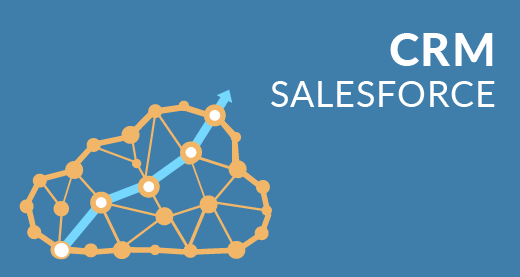The Top Financial Trends in 2025
Understanding the top financial trendsFinancial trends refer to patterns, movements, and shifts in... More in 2025 that will shape personal finance is crucial. The economic landscape is rapidly changing, influenced by inflationThe increase in the prices of goods and services over time, ... More, fluctuating interest rates, and shifting global conditions. To navigate this evolving environment, individuals need to stay informed about the latest developments in saving, spending, and investing. In this article, we’ll explore the most significant top financial trendsFinancial trends refer to patterns, movements, and shifts in... More in 2025 with data-driven insights, expert analysis, and actionable tips for making smarter financial decisions.
The current economic environment has made it more important than ever to stay up to date with the latest financial data and trends. Whether you’re looking to improve your savings, navigate the evolving consumer spending habits, or find smarter investment opportunities, this article will break down the most crucial financial trendsFinancial trends refer to patterns, movements, and shifts in... More of 2025. We’ll dive into key statistics, explore how individuals are adjusting their financial strategies, and examine how economic changes are influencing consumer behavior. By the end of this post, you’ll have a comprehensive understanding of what’s happening in the world of personal finance today.
We will also provide resources where you can dive deeper into specific topics, ensuring that you not only get a snapshot of the financial landscape but also have the tools to make informed decisions about your own money.
1. The State of Saving in 2025
The pandemic drastically impacted how people view savings. As unemployment surged and government relief programs provided temporary financial relief, many consumers began prioritizing saving for emergencies. Fast forward to 2025, and the landscape of saving has shifted again. Higher inflationThe increase in the prices of goods and services over time, ... More and stagnant wage growth mean that saving has become a greater challenge.
Key Stats and Trends:
- Personal Saving Rate: In the early stages of the pandemic, the personal saving rate reached an unprecedented 33%. As of 2025, it hovers around 4.5%, indicating a sharp decline as consumers have returned to more typical spending behaviors. (Source: Federal Reserve)
- Emergency Savings: A significant portion of Americans are still underprepared for emergencies. According to a National Endowment for Financial Education survey, 44% of U.S. adults say they would be unable to cover an unexpected expense of $400 without borrowing money or selling something.
- Inflation’s Impact on Savings: With inflationThe increase in the prices of goods and services over time, ... More rates around 3.5%, the value of savings is eroding at a rate that outpaces interest earned on most savings accounts. This has forced many to reconsider traditional savings methods and explore investment options like inflation-protected securities and real estate.
Strategies for Improving Savings:
- High-Yield Savings Accounts: While traditional savings accounts offer little return, high-yield accounts, especially those offered by online banks, can provide interest rates of around 4% to 5%, which outpaces inflationThe increase in the prices of goods and services over time, ... More.
- Automated Savings Tools: Tools like Acorns and Qapital have gained popularity for automating savings and making it easier for people to set aside money without thinking about it.
- Increasing Contributions: For those with retirement accounts, increasing contributions to accounts like 401(k)s or IRAs—especially with employer matching—can provide a boost to long-term financial security.

2. Top Consumer Spending Trends in 2025
Consumer spending is a dynamic aspect of the economy, and in 2025, it is significantly influenced by inflationThe increase in the prices of goods and services over time, ... More and changing consumer priorities. Understanding how Americans allocate their budgets can provide insights into top financial trends in 2025.
Key Stats and Trends:
- Spending on Essentials: According to the Bureau of Labor Statistics, spending on food, housing, and healthcare has seen an average increase of 6% per year since 2023, reflecting rising costs in everyday essentials.
- E-commerce: E-commerce is still growing, but at a slower pace. As of 2025, online sales account for about 16% of all retail spending, with growth projections down from previous years. (Source: U.S. Census Bureau)
- Debt Levels: With rising costs, consumer credit card debtThe amount of money a person owes to a credit card company d... More in 2025 reached approximately $1 trillion. This surge has prompted some to lean heavily on Buy Now, Pay Later (BNPL) services, which grew by 10% in 2025. While BNPL allows immediate purchasing power, many individuals are starting to accumulate excessive debt that they can’t easily repay.
Spending Shifts:
- Essential Goods: The surge in food, housing, and healthcare costs is prompting many consumers to adjust their budgets, reducing spending on discretionary items such as dining out, vacations, and entertainment.
- Sustainability and Conscious Spending: More people are becoming conscious of where their money goes. According to a Pew Research Center survey, 56% of consumers are more likely to choose brands that align with their values, focusing on sustainability and ethical sourcing.
- Financial Technology (FinTech): FinTech companies like Venmo and Cash App have become essential tools in managing spending, especially for younger consumers. These platforms make it easier to track spending habits and set financial goals.
By keeping an eye on top consumer spending trends in 2025, individuals can adjust their personal finance strategies to better manage budgets and reduce unnecessary expenses.
3. The Investment Landscape in 2025
In 2025, the investment landscape is vastly different from just a few years ago. A mix of inflationThe increase in the prices of goods and services over time, ... More, high interest rates, and economic uncertainty has caused many to adjust their investment strategies, focusing on diversification and inflationThe increase in the prices of goods and services over time, ... More protection.
Key Stats and Trends:
- Stock Market Volatility: After an up-and-down recovery since 2020, the S&P 500 in 2025 is showing moderate growth of around 5% year-to-date, with tech stocks taking a hit due to rising interest rates. This year’s volatility is exacerbated by global supply chain issues and ongoing geopolitical tensions.
- Real Estate Investment: With mortgage rates at around 6.8%, the housing market has cooled, but real estate investment trusts (REITs) and other indirect property investments have seen an uptick. Real estate prices in major markets have continued to increase by about 6% year-over-year, even with higher borrowing costs.
- Cryptocurrency: Cryptocurrencies like Bitcoin and Ethereum have maintained their value in the face of regulatory uncertainty, with Bitcoin currently hovering around $35,000 and Ethereum at $2,400. However, overall adoption has slowed, with only about 15% of Americans owning cryptocurrency as of 2025.
- ESG Investing: More investors are moving toward Environmental, Social, and Governance (ESG) investments, with nearly $1 in every $3 invested in the U.S. focusing on ESG-compliant funds. This reflects a growing desire for investments that align with personal values.
How to Invest Smartly in 2025:
- Diversification: Given the unpredictability of markets, investors are focusing on a mix of traditional stocks, bonds, real estate, and alternative investments to reduce risk.
- TIPS (Treasury Inflation-Protected Securities): With inflationThe increase in the prices of goods and services over time, ... More concerns, TIPS have become a popular choice for those looking to protect their savings from inflation’s erosive effects.
- Index Funds and ETFs: Investors are increasingly turning to low-cost index funds and exchange-traded funds (ETFs) to gain broad market exposure and reduce risk.
2025
As we move further into 2025, financial trendsFinancial trends refer to patterns, movements, and shifts in... More continue to evolve in response to the changing economic environment. From how we save to how we spend and invest, the landscape is constantly shifting. While inflationThe increase in the prices of goods and services over time, ... More remains a pressing concern and interest rates continue to affect markets, there are still opportunities for those who are prepared and informed.
The key to navigating these challenges lies in diversification, careful planning, and staying aware of the latest financial data. Whether you’re focused on building savings, reducing debt, or optimizing your investment portfolio, being informed is your best defense against the uncertainties ahead. By leveraging these financial trendsFinancial trends refer to patterns, movements, and shifts in... More and adjusting strategies as needed, individuals can put themselves in a stronger position to weather economic storms and take advantage of emerging opportunities.





